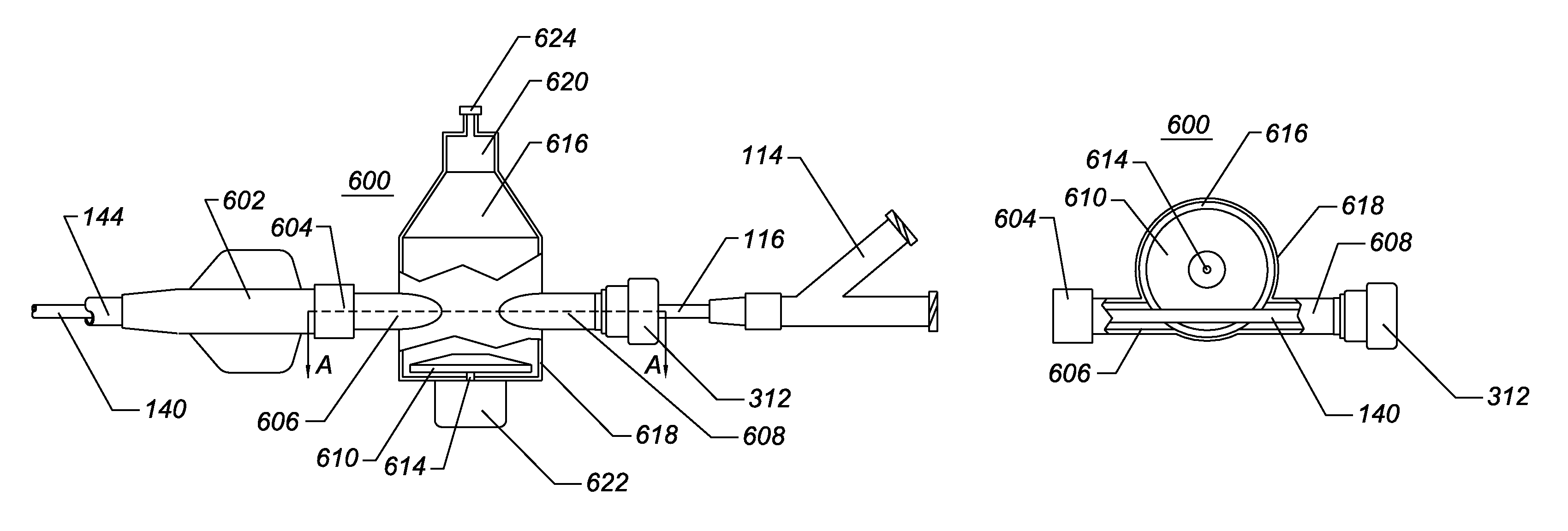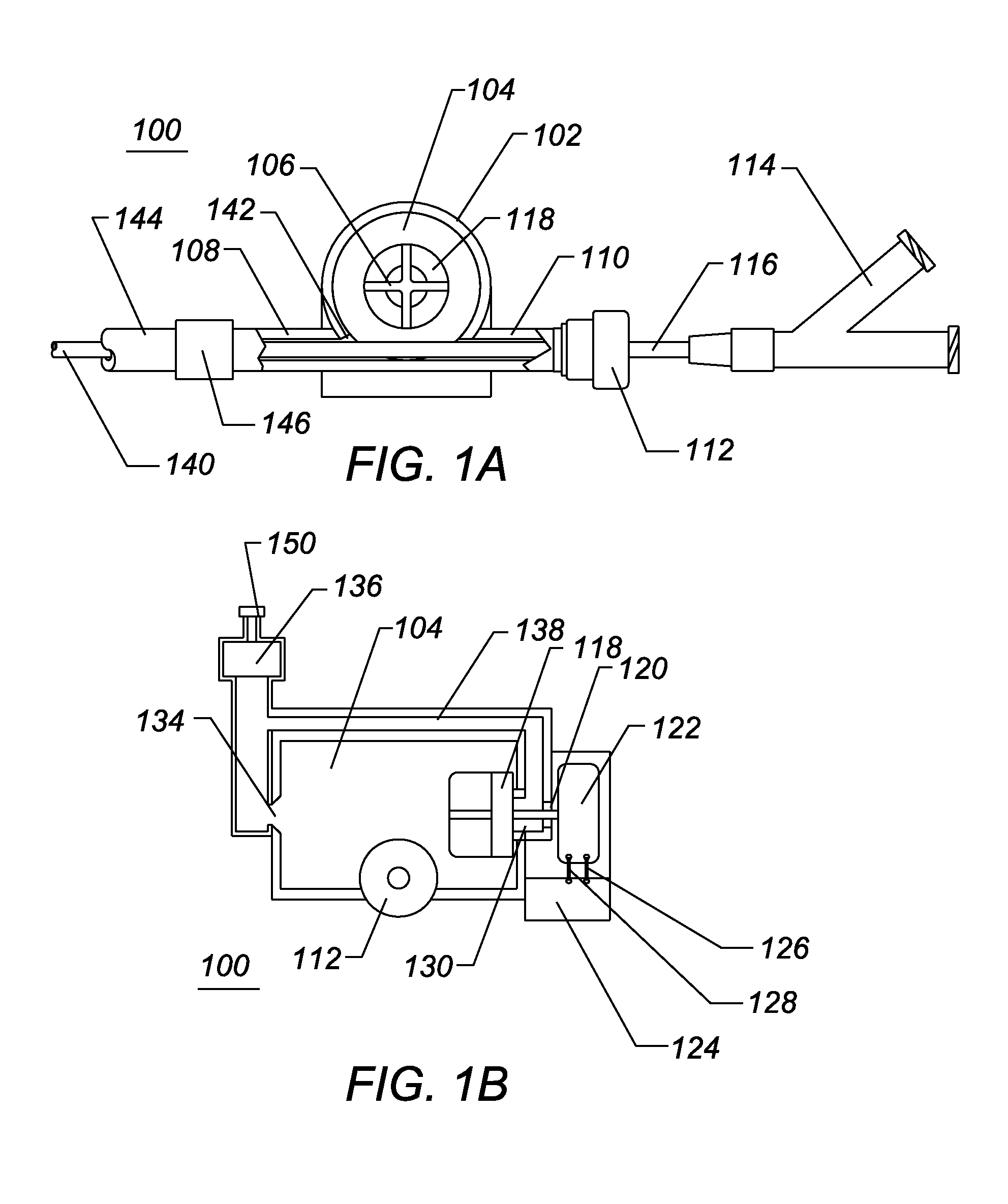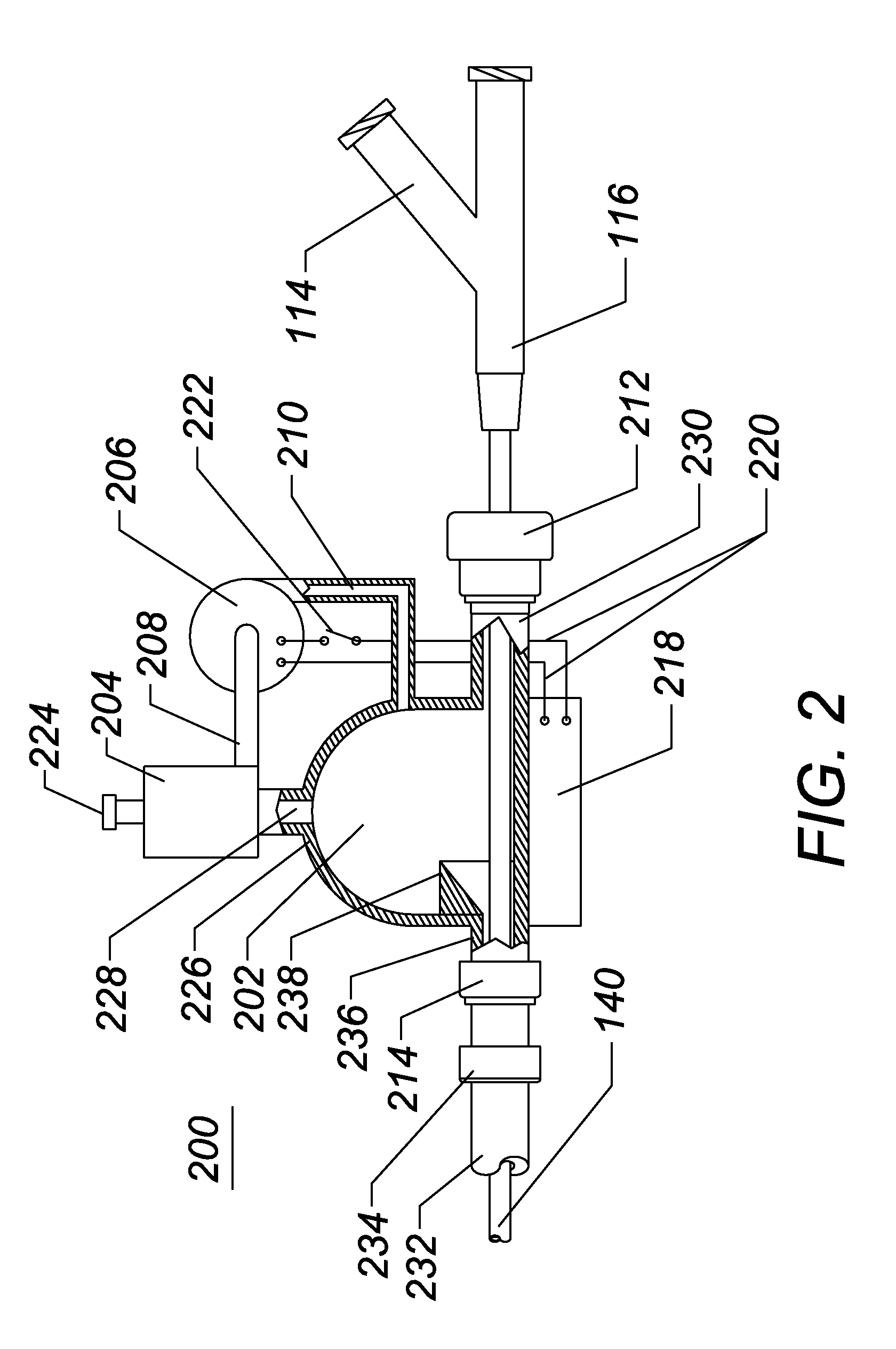Method and apparatus for prevention of catheter air intake
a catheter and air intake technology, applied in the field of cardiology, radiology, electrophysiology or endovascular surgery, can solve the problems of air embolism, air embolism traversing from the right heart to the left heart during right heart interventional procedures, and potential negative pressure gradient between the rooms
- Summary
- Abstract
- Description
- Claims
- Application Information
AI Technical Summary
Benefits of technology
Problems solved by technology
Method used
Image
Examples
Embodiment Construction
[0038]As used herein the terms distal and proximal are used to clarify the location of various points along the axial length of a catheter or sheath. Points are defined with respect to the end grasped by the user and the end that is inserted in the patient in the same manner as would one skilled in the art of medical device catheter construction. The proximal end of the catheter or sheath is defined as that end closest to the user or operator, or user, of the catheter or sheath while the distal end of the catheter or sheath is defined as that end that is inserted into the patient.
[0039]FIG. 1A illustrates a side view of a catheter blood air filter assembly 100 of the present invention. The filter assembly 100 comprises a shell 102 further comprising an internal chamber 104, and an impeller 118 further comprising a plurality of vanes 106. The filter assembly 100 further comprises a second catheter inlet port 110, a second catheter outlet port 108, an inlet hemostasis valve 112, an op...
PUM
 Login to View More
Login to View More Abstract
Description
Claims
Application Information
 Login to View More
Login to View More - R&D
- Intellectual Property
- Life Sciences
- Materials
- Tech Scout
- Unparalleled Data Quality
- Higher Quality Content
- 60% Fewer Hallucinations
Browse by: Latest US Patents, China's latest patents, Technical Efficacy Thesaurus, Application Domain, Technology Topic, Popular Technical Reports.
© 2025 PatSnap. All rights reserved.Legal|Privacy policy|Modern Slavery Act Transparency Statement|Sitemap|About US| Contact US: help@patsnap.com



